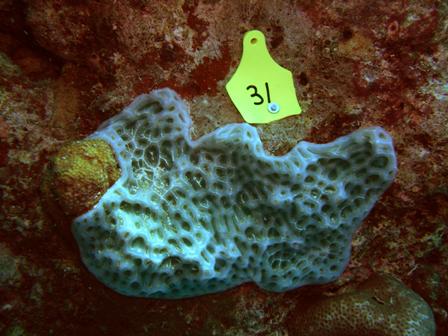Chemicals from Sea Squirt could make smaller, greener computer chips
13 September 2012
Scientists from the University of Aberdeen’s Marine Biodiscovery Centre and the University of St Andrews have developed a method to make components of a new type of computer chip using organic chemicals from a sea squirt. The findings were presented at the British Science Festival 2012, held in Aberdeen last week.
Their research — which is the first of its kind in the world — could lead to the development of a computer which is greener to produce, processes information faster and is more compact in size.
Professor Marcel Jaspars, Professor of Organic Chemistry at the University of Aberdeen and Director of the institution’s Marine Biodiscovery Centre said: “Computer chips are currently made of a series of transistors made of silicon. Though made from a natural resource — sand — a vast number of silicon atoms are required to make one single transistor and in addition a lot of energy is used in the development of this type of transistor.
“This project is looking at a greener, more sustainable alternative — making transistors from single molecules sourced from nature. It is a global first — we are the only group of scientists to be working towards making this potential breakthrough in computing technology using sponges from the deep. Specifically focus is on the molecule patellamide, originally discovered from the seasquirt Lissoclinum patella found in the Great Barrier Reef.”

The seasquirt Lissoclinum patella
Scientists working on the project have achieved a process for redesigning and producing these molecules to be used as computer components. Their production uses clean and green biological processes.
Professor Jaspars continued: “Developing a computer chip from single molecules sourced from nature has a number of benefits. It is greener to produce as we can essentially ‘grow’ the parts required for the new ‘patellamide’ computer chip in a test tube meaning it would be significantly more environmentally-friendly than creating silicon computer parts.
“It would result in a smaller, more compact computer as the computer chip would have an array of single patellamide molecules meaning overall the computer chip would be more compact.
“The result would be a faster computer as using smaller components means that they are closer together within the computer chip meaning they transfer information between one another at a far faster pace — essentially meaning the computer will operate more quickly.”
This project is an example of the pioneering research being conducted within the University’s Marine Biodiscovery Centre which is harnessing the potential of unique marine organisms from the depths of the world’s oceans. Scientists from the Centre are also exploring the potential of natural resources from our seas to create new pharmaceuticals for the treatment of diseases such as cancer.
Professor Jaspars said: “Nature is the source of a number of beautifully engineered and efficient molecular machines which are being tapped for their potential use in molecular nanotechnology. This project is just one strong example of the exploration of this potential and the benefits it could have.”